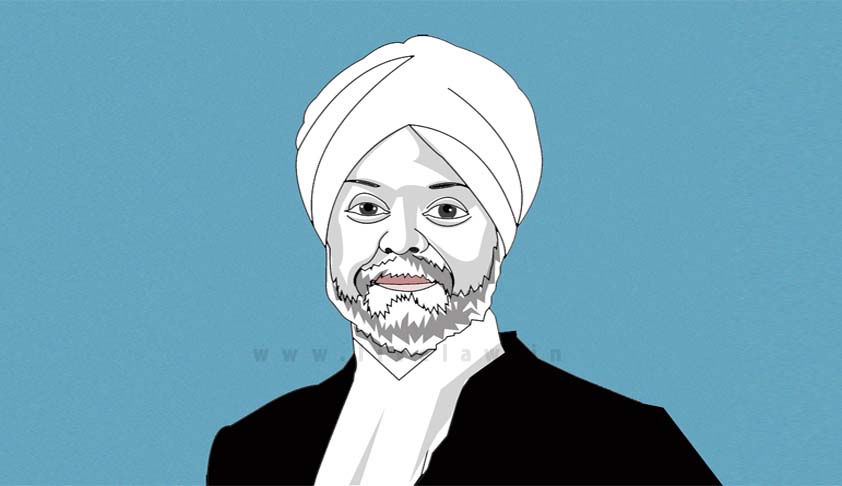New Captain Of The Ship, Change In Sailing Rules Soon?
Namit Saxena
23 Dec 2016 9:16 AM GMT
Justice Jagdish Singh Khehar has recently been appointed as the next Chief Justice of India as Justice TS Thakur will superannuate on January 4 next year.As is the practice in the Supreme Court, Justice Thakur has already surrendered the administrative works, which will be picked by Justice Khehar in the next calendar year, when the Supreme Court reopens on...
Justice Jagdish Singh Khehar has recently been appointed as the next Chief Justice of India as Justice TS Thakur will superannuate on January 4 next year.
As is the practice in the Supreme Court, Justice Thakur has already surrendered the administrative works, which will be picked by Justice Khehar in the next calendar year, when the Supreme Court reopens on January 2.
http://www.livelaw.in/sc-junks-pil-justice-khehars-elevation-cji/
Looking at the vast powers of the Chief Justice of India in the constitutional prism, broadly speaking, the CJI swears in the President and Governors; the President must ‘consult’ the Chief Justice before appointing judges for the Supreme Court and High Courts; Article 127 gives the CJI power to appoint ad hoc Supreme Court judges; Article 128 grants power to CJI to secure attendance of retired Supreme Court judges; Article 130 provides for the power of CJI to establish a seat of the Supreme Court outside of Delhi; Article 146 grants him the power to appoint officers and servants of the Court; Article 222 grants transferring power to move judges of High Courts to other High Courts; Articles 257, 258, and 290 give the CJI the ability to appoint an arbitrator to resolve certain financial disputes between the centre and the states. The CJI is also remunerated a little more than his/her robed brethren, along with few other perks.
The post of CJI has also lately gained additional powers through judicial decisions and Supreme Court Rules framed under Article 145 confer enough powers on the Chief Justice of India. The CJI enjoys powers like:
- The power to select justices for benches and decide roster for matters.
- A stronger ability and role in appointment of judges on the Supreme Court and High Courts as his opinion has been judicially held to be ‘determinative’ and to have ‘primacy’.
- The CJI often sits in a three judge combination and being the administrative head of Supreme Court, important matters carrying more weight are placed before him and rarely his views are found in minority.
- The power to decide which and what nature of cases get heard and when.
- Most mentionings of important cases for listing, early hearing, retainment, delisting, urgent matters etc are made to the CJI.
- CJI is also indirectly the spokesperson for the Supreme Court or even judiciary and perhaps its most public face as he is called to various functions and his views are most reported.
- Most letter PILs (epistolary jurisdiction of the Supreme Court) are addressed to the CJI whose office goes through the first wave of filtering (taking out complaints against judges, etc.) before they are turned over to the Registrar's PIL office who goes through the next round of filtering (which removes the vast majority of them before they even reach an admission bench of the Supreme Court). In this process the CJI's office is the only justice's office that will come in contact with these letter petitions before they make it to the PIL office.
An interesting question doing rounds in the lawyer’s corridors at the Supreme Court is that what new changes will be bought up by Justice Khehar in and at least for his tenure of around eight months. What perhaps bothers advocates and litigants is that will there be a roster change in the Supreme Court and new practice directions?
As mentioned above, the CJI is the master of roster and in the past, it has been seen that most CJIs develop a practice of bringing in one’s own set of rules - for hearing, mentioning, listing, filing etc.
At the bar, these rules are commonly termed as the ‘Kapadia rules’ (who stopped the practice of mentioning in his court), ‘Lodha rules’ (new Supreme Court Rules, 2013 were brought in), ‘Bharucha Rules’ etc.
Recently, Justice Chelameshwar commented on how he had never practiced service law but was set to hear service matters.
Pertinent to note that the moment a judge of the highest court of the land publically said he has no exposure in service matters and that he should have assigned new roster, it affects public confidence in judiciary for effective adjudication. Roster has also been found to be a weapon to punish the judge who is not in good terms with CJI.
Every puisne judge in the Supreme Court eagerly waits for a presiding position.
Justice Gowda, despite being a senior judge, was not allotted a court to preside for more than six months - a punishment given for not being in the good books of then CJI Justice Dattu.
In my view, it is a violation of right of a Supreme Court judge who is a constitutional authority in himself. It is ironical that a Supreme Court judge who has all the powers to hear and adjudicate any issue is left without a complaint mechanism, except expressing his displeasure here and there indirectly.
It has been lately observed at the bar that a tough judge comes with tough rules as for example, the rules Justice Kapadia formulated or the ones he removed were mostly impractical and inconvenient to the members of the bar as well as for the litigants, though well intended.
We can expect rules from Justice Khehar, who is tough. Litigants expect such practice directions which can bring in certainty for listing and hearing of matters.
One other thing which requires immediate attention is that many vital issues referred to Constitution benches are pending in the Supreme Court but there is a no list available and the matters do not find place for hearing. It is a long pending demand to have a list of cases/issues referred to 3 judge bench and larger benches of 5 to 7 to 9 to11, which is very important with lot of cases being reported every year. There should be proper structuring of hearings. The proposal made by an esteemed friend and senior at bar for fixed duration of oral advocacy may be moved to avoid legal holidays for rest of the cases.
Given the chequered history of practice directions, all would be short lived as the CJI after Justice Khehar, Justice Dipak Misra is not known to be a sticker of procedural rules, nevertheless, as the new captain of the ship, Justice Khehar may install certain improvement measures soon. Strong waves ahead, sailors to hold tight. New year, new era for Supreme Court lawyers.
 Namit Saxena is a Lawyer practicing in the Supreme Court of India.
Namit Saxena is a Lawyer practicing in the Supreme Court of India.
[The opinions expressed in this article are the personal opinions of the author. The facts and opinions appearing in the article do not reflect the views of LiveLaw and LiveLaw does not assume any responsibility or liability for the same]
This article has been made possible because of financial support from Independent and Public-Spirited Media Foundation.


